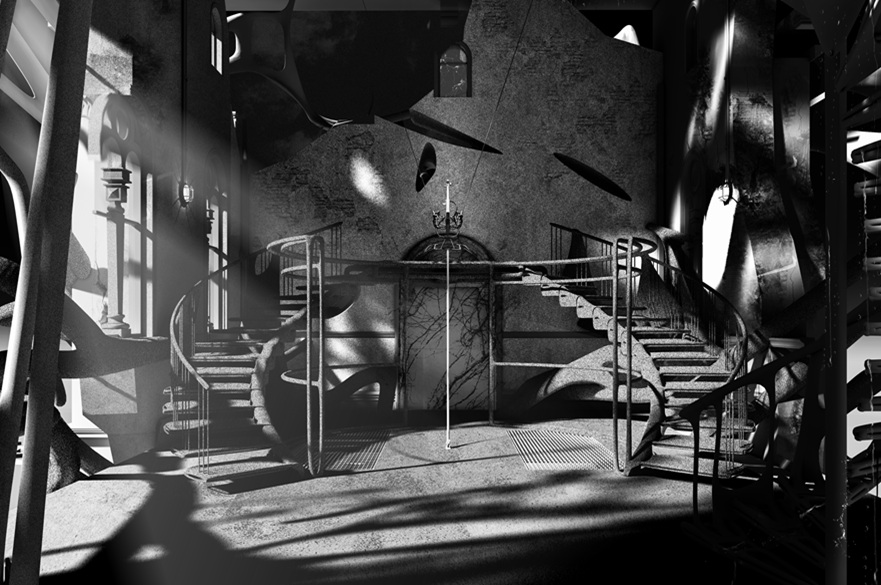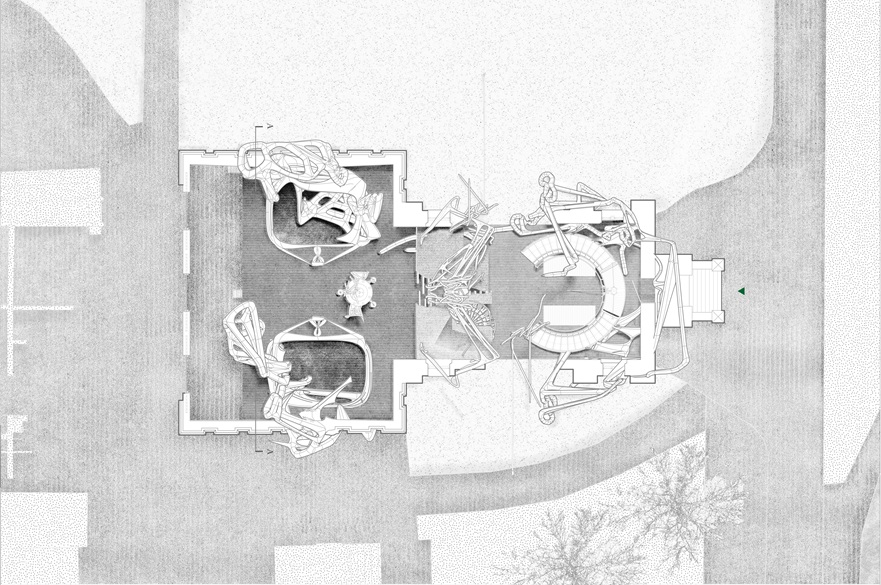Showcase 2025 Student Spotlight: Yusuf Chowdhury
Student Spotlight featuring BA (Hons) Interior Architecture and Design student Yusuf Chowdhury and his project 'Algorithmic Infestation'.
By Jon Duckworth | Published on 20 May 2025
Categories: Student Showcase; School of Architecture, Design and the Built Environment;

The Project
Humanity’s overindulgence in AI-enhanced augmentation in pursuit of perfection has led to systemic collapse, spiralling into parasitic control of human hosts, severing their connection to creativity. Yusuf's project is centred around three rituals of resistance - the Artist, the Poet, and the Musician - each striving to reclaim their lost creative instincts within a decayed world that can no longer sustain them. The scheme operates through decay-informed growth systems, strategically deployed across the ruins of Papplewick Pumping Station and tailored to support new human rituals. These site-specific structures transform the space into a sanctuary where dawn, nature, and sonic comfort are reimagined to cultivate the optimal conditions for human expression. Together, these rituals form a symbiotic ecosystem where creativity and nature thrive, standing in stark contrast to the parasitic, decaying world beyond - fulfilling an ongoing cycle of ruin and renewal.

Design elements were inspired by fungal and parasitic systems.
The inspiration behind the project
Yusuf drew inspiration from film and television, as well as biology for Algorithmic Infestation.
"I was heavily inspired by the world-building seen in stories like 'The Last of Us' and the set design of the 'Alien' franchise - how architecture and environment can communicate tone and narrative. My background in biology also became a valuable tool, especially in exploring fungal and parasitic systems. It helped ground this highly conceptual project in a sense of realism, prompting the question: with our growing dependence on AI, could this really become our future?"

Yusuf conceives a space "tailored to support new human rituals".
The project experience
Yusuf says: "This project pushed me to design with rigour and meaning. I started with something as simple as mould on bread - it was challenging to visualise a building from that. But it was exactly that complexity and abstraction that gave my project depth and purpose. It taught me to trust the process, even when the direction isn’t immediately clear."

Yusuf Chowdhury - BA (Hons) Interior Architecture and Design
Being part of NTU
Yusuf considers his time at NTU has taught him how to work under pressure and manage tight deadlines, especially when it came to undertaking his placement year. "During my placement, I developed the ability to work at a faster pace while improving the quality of my output - especially through industry software. That experience really sharpened my workflow and confidence."
The social aspect of university is also important. "Meeting some of my favourite people on the course. It’s the in-between moments - the late nights and shared laughter - that I’ll remember most."
Closing remarks
Asked to share words of wisdom for the future Product Design students out there, Yusuf offers the following:
"This course is extremely time-intensive, so start early and manage your time wisely. Pick a concept you truly believe in - because you’ll be living with it for months. Ask yourself: all architecture takes up space, so why should your project exist? What broader message does your work express? If you find that answer, the process becomes much more meaningful."